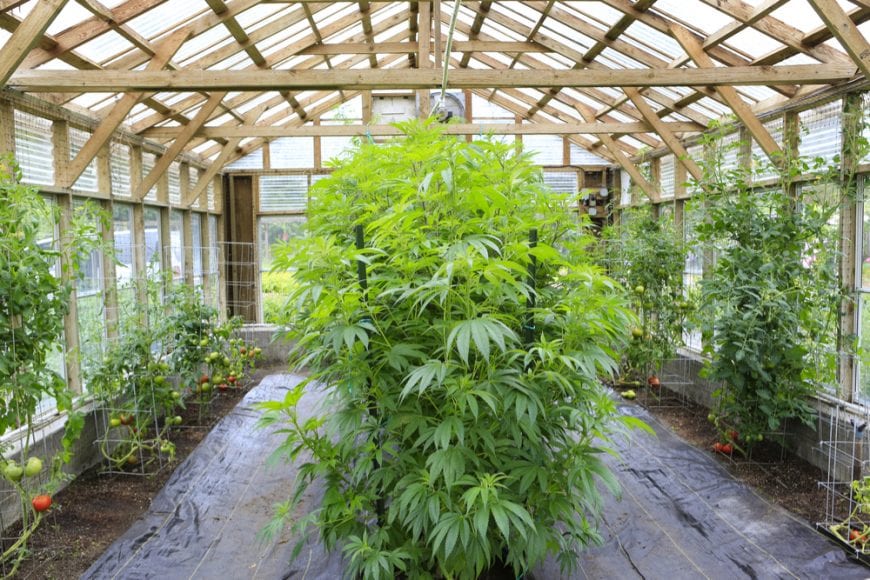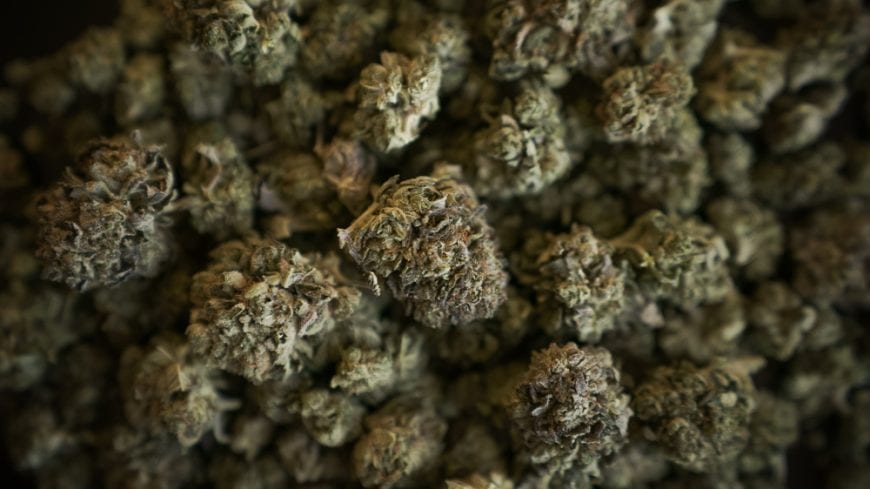You’ve lovingly brought your ladies to full bloom, but it’s not over yet. The critical phase of properly drying and curing cannabis is ahead. You do this part wrong and you could lose your crop.
In some areas of the world, such as the entire country of Canada and the state of Colorado, residents are allowed to grow a limited number of cannabis plants at home. No need for a medical card. No need for a special government-issued license. So long as you meet the age requirements, you can grow weed. However, this process is not always easy. So here’s what you need to know about one of the most difficult parts: curing cannabis.
Sounds simple enough, right? Just keep in mind that growing at home brings some challenges. With all the issues with smell, regulating moisture and temperature, hot lights, and bloated electric bills, it’s no wonder most people choose to buy their cannabis prepackaged and ready to go.
But you’re determined to grow these plants at home. Cannabis is finally legal, right? Why the heck wouldn’t you exercise your right to grow some dank? Let’s get to it.
First, growing cannabis requires a lot of knowledge, intuition, and patience. Taking a plant from seed to flower has been covered elsewhere. Instead, let’s focus on what many cannabis lovers would argue is the most important step: curing.

A Word on Drying vs. Curing Cannabis
To get the low-down on curing cannabis, RxLeaf spoke with a Colorado-based cultivator who we’ll call “Dalton.” Dalton’s not his real name, but he asked to remain anonymous, and since he’s a huge fan of Patrick Swayze’s Roadhouse, we’ll go with that.
“Drying and curing are two related, but completely different processes with completely different goals,” he said. “You can dry without curing, and you can cure without fully drying.”
As Dalton explained, drying is literally that: sapping moisture from the buds. Sometimes, low heat can be applied to speed up the process. A good dry shouldn’t require heat, but sometimes the local climate (near the ocean, in a rainforest) doesn’t give you that privilege. Drying can take anywhere from a few hours to a few days.
Basically, curing is all about babying the buds so they’re optimized for flavor and aroma. Some drying takes place during the cure, but the real goal of this step is fully converting the plant’s natural chemical makeup into something more palatable. The cure step can take anywhere from two weeks to eight weeks.
“If you’re growing cannabis to make edibles or wax, you don’t need to cure. You can dry the buds and skip the cure,” Dalton added. “Curing is to get the nugs smelling and tasting delicious. It’s really for smoking only. Sometimes it’s useful for making edibles. Or for showing off.”
How to Dry Your Buds
To dry your buds, snip branches from the plant. Buds should remain attached to the stems, and multiple stems can be attached to a single branch. Hang these branches upside down in a well-ventilated room.
“The very first thing everyone should know about cannabis is it’s a living thing,” he said. “The second you uproot the plant, it gets stressed. When it’s stressed, it starts releasing oils. Even as it’s drying, it’s producing cannabinoids.”
Drying removes water from your freshly harvested buds. Essentially, water is undesirable for a few reasons. One, moisture can cause the buds to mold or mildew, which isn’t just gross but can be lethal as well. Two, moisture can rot the buds, which is also gross. Third, water is wet. Smoking wet weed is gross and pointless.

Know Where You Grow
“The trick to drying is understanding your environment,” said Dalton. “You need to know basic things about your climate. Do you live near the ocean? Does it rain a lot? Is it hot or cold most months? Things like that.”
According to Dalton, environmental humidity will determine how you should dry your buds. If you live in a dry climate, then you can leave the buds out in the open until they’re dry, which may only take several hours to a few days. If you live in a humid area, you may need electric fans or a heated room.
“Weather is another big factor people don’t take into account,” he said. “Pay attention to the seasons changing. If you’re growing and harvesting at the right times, then the harvest should come just as the season is changing from summer to fall.”
“When that happens, air pressure changes. Temperature drops,” Dalton continued. “Those little changes have a huge effect on the humidity, and they can happen overnight, so pay attention.”
To test proper dryness, Dalton recommended the pinch test. Pick up a bud between two fingers and gently pinch it. It should feel stiff, but it shouldn’t break or crumble under the pressure.
“You don’t want to dry the buds too much, or they’ll be brittle,” Dalton said. “But if they don’t dry enough, you risk ruining months’ worth of work to mold.”
Basically, pacing is also critical. “You want a slow dry,” he continued. “A slow dry will keep the THC and the terps in the buds. If you dry with heat or fans, you could lose those to evaporation.”
About Curing Cannabis
Curing takes place immediately after drying. In drier climates, curing cannabis and drying can take place at the same time, but usually buds are thoroughly dried first.
“A good cure separates a real grower from an amateur,” Dalton mused. “You can always tell when something’s rushed or mishandled, because the bud smells and tastes terrible.”
A proper cure changes the buds’ chemical makeup. Exposing cannabis to air causes the cannabinoids and terpenes to oxidize. Oxidation forces the compounds to change into new ones. Curing tobacco or tea leaves refines their flavor and scents, making them far more flavorful. It’s no different with cannabis.
Furthermore, curing cannabis maximizes cannabinoid and terpene production and balance. During this process, some THC and CBD will degrade into other products like CBN.
Next: Air Tight Containers
To cure, place the buds in air-tight containers. Plastic Tupperware works fine. Leave these containers in a dark, relatively cool room. Every few hours, open the containers to “burp” them. Burping releases the old, moist air in the container and replaces it with fresh, drier air. Burping should be done every few hours, so if you can’t monitor your cure round-the-clock, get someone else to help.
“There’s no set time for curing. It varies,” Dalton explained. “It’s not just environment dependent. It depends on the strain, too. It can also depend on what you’re going for.”
According to Dalton, the minimum time for curing should be two weeks. Ideally, curing should span over four to eight weeks.
“A two-week cure is if you’re just trying to get product as quickly as possible,” he said. “Recreational grows do two-week cures, and you can tell. In my opinion, a real cure is at least four weeks, bare minimum.”

To Recap
Drying Cannabis
- Cut branches from the plant with buds intact.
- Hang the branches upside down.
- Test dryness by pinching buds. They should be stiff but should not easily break or crumble.
- Using heat or fans is optional but not recommended unless necessary.
Curing Cannabis
- Remove buds from branches/stems. Remove any fan leaves if any are remaining.
- Place buds in an air-tight container with a removable lid or a vent.
- Store contained buds in a dark room that is approximately room temperature.
- Burp the containers every few hours.
- Repeat the burping process for two to eight weeks.
That’s it. Just a little more TLC and you’ll be at the finish line, enjoying the aromatic and medicinal fruits of your labor.





